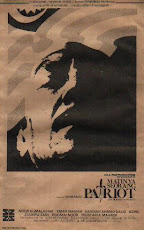#353. Feature Film Production
This is visual story telling.
If you don't have a crew and are doing all the filming yourself keep in mind that good lighting techniques can make a huge difference on the quality.Film making is as much art as painting a picture so a media limitation based on expense should not stop anyone from experimenting with the art of film-making.
The major stages of a major Feature Film production with lots of money are :
1. Development
In the development stage a producer comes up with an idea for which a script is written(and rewritten until it is perfected). A script can also be obtained from many sources as scriptwriters are always attempting to get their scripts purchased.
2. Preproduction
In preproduction the movie is planned and cost is established. Also the producer will hire a crew.
Smart producers know how to maximize the final product by getting the best actors that fit their roles within their budgets. On large budget films this could be hundreds of crew members but on less expensive films, skeleton crews are established based on the following positions.
a. Director. (Responsible for acting and creative elements)
b. Assistant director. (Manages shoot schedule, logistics & more)
c. Producer. (finds actors)
d. Location manager. (finds film locations)
e. Director of photography or cinematographer. (Photography)
f. Art director. (production sets, costumes plus provides makeup & hair styling services)
g. Storyboard artist,
h. Production sound mixer.
i. Composer. (creates music for the film)
j. Choreographer.
3. Production
This is when the actual filming takes place based on shooting schedules, locations and film sets. The director can request multiple takes on scenes until he is satisfied that his ideas are expressed.He will review daily recorded video and determine if scenes have to be re shot.
A couple of notes about obtaining pre shot background footage is that royalty free footage is very desirable as there are no delays in negotiating with content providers who are attempting to maximize their profit.Royalty free footage also means that you buy it only once and use it as many times as you wish.
Always go for the latest format available. If you are buying today then it only makes sense to buy High Definition(HD) footage.Downgrading HD to lower formats is easy, It is very difficult to make older formats look good in HD. I recommend you make your movie using 35 mm unless you are using a Red, a Viper or the Sony F23. The 35 mm could then be transferred to digital(preferably HD) using a process called Telecine for cutting and editing.
4. Post Production
Here the editor assembles the footage and formulates a rough cut of the material.Most directors work very close with editors to identify the most important shots to represent their artistic ideas.Some directors rely heavily on their editors judgment and present them with many additional hours of footage, allowing them to decide what gets cut from the film.
Editors are normally very artistically inclined and make tremendous contributions to projects so finding a good one is important.Here is also where special effects and color correction are finalized and implemented.Check the software listing editing software and look at either Adobe After effects or Magicbullet for color correction software.
5. Distribution
Large films funded by the major studios are distributed to theaters they are affiliated with. Lower budget productions can be distributed via DVD, VHS or even Internet.For lower budget features many filmmakers present their works at film festivals in the hope of getting picked up by one of the big studios or their subsidiaries.
Ideally Feature film production, at it's best, is about having good actors working on a well written script supported by a good crew and lots of time and money.This is almost never the case and corners are usually cut everywhere.







0 ulasan:
Catat Ulasan